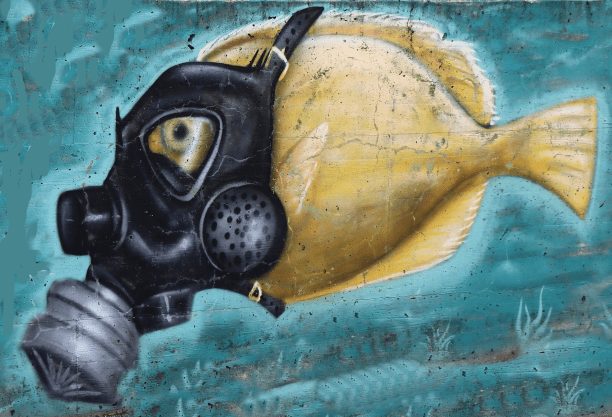Water Water Everywhere and Not a (Safe) Drop to Drink
Authors: Allison A. Sakara, NP, MSN, RN, PHRN & Mark Goldfeder, MS, NRP
In the words of the United States Attorney General Merrick Garland, “clean water is a right.” But is that right being protected? And how effective are those actions? Reports on the national news of a city or town facing a contaminated water crisis are all too frequent. Residents cannot use the water in their homes for cooking or bathing, let alone drinking. City and county-wide boil water orders lasting weeks to months have prompted the federal government to sanction, fine or even take control of municipal water departments in the interest of public safety. However, even when the boil water orders are lifted and the community’s water is declared “safe,” another threat remains: PFAS (the abbreviation for per- and polyfluoroalkyl substance).
In our previous article, we discussed how airborne PFAS has become an omnipresent risk to humans, animals, plants, and habitats. PFAS in the air is also a source of PFAS contamination of our water supply, entering this precious resource in number of ways, as below:
- transported by falling rain and snow into tributaries, contaminating watersheds
- airborne particles contaminated with PFAS fall into the surface water of ponds, lakes, rivers, and reservoirs
- PFAS contaminated particles land on hardscapes and are washed into storm drains, in addition to seeping into wells.
But it is not just PFAS in the air that contributes to PFAS in water. Another way that PFAS enters our water systems is by going down the drain. Washing, scrubbing, and rinsing products that contain PFAS contribute significantly. PFAS has been used for decades not only to provide non-stick surfaces on many products but as a flame retardant, to preserve color, and to reduce staining on many types of surfaces.
When you purchase a product labeled ‘’PBA-free’’, this is not the same as being PFAS-free. Cookware, food containers, clothing, and textiles are all common PFAS-containing consumer products. Plastics of all varieties, from water bottles to drainage pipes, are a source of PFAS contamination. Many household and commercial flooring, furnishing, and building material options also incorporate PFAS. Firefighters use a PFAS-containing foam to extinguish fuel fires from motor vehicles and other sources. Once the fire is out, the foam that remains on the vehicle and other surfaces is rinsed onto the ground. The PFAS-contaminated rinse water then flows into nearby drains or can be absorbed into and contaminate the ground soil. (The challenges of PFAS contamination of soil will be discussed in our next article.)
While airborne PFAS is an environmental hazard with a significant impact on climate change and low to moderate direct health risk, water-borne PFAS has been shown to have significant adverse health effects. PFAS in water sources has been shown to elevate cholesterol levels, increase rates of heart attacks, and increase death rates from all causes, including cancer.
Research studies of significant PFAS water contamination cases have traced the contamination to waste from manufacturers of PFAS-containing products, poisoning communities near the manufacturing plant and impacting the water safety for hundreds of square miles. These large-scale contaminations have resulted in lawsuits and hundreds of millions of dollars in fines against PFAS manufacturers that allowed wastewater to flow into water drains, precipitating environmental damage and creating health hazards.
Municipal and private water systems have attempted to remove PFAS from water using various technologies. PFAS chemicals were designed to create non-adherent surfaces and to resist many substances. And these same properties are what make them nearly impossible to remove from our water sources. Boiling the water has no impact on PFAS contamination. Activated charcoal filters, ion exchange resin filters, reverse osmosis systems, UV light sanitation, membrane separation, and microbe-based approaches have been tried alone and in various combinations. Unfortunately, research has shown these methods to be ineffective.
So what can be done? Being aware of the PFAS problem and knowing ways to reduce your own health risks is a start. Simple product choices, such as using well-washed stainless steel travel bottles and thermoses, are a start. The only true solution, though, is to remove the contamination from the source. Our strength will be in our numbers if we back legislation to increase PFAS testing of water sources, promote PFAS alternatives in manufacturing and consumer products, and support environmental groups advocating for removal of PFAS from our natural resources.
About the Authors:
Allison A. Sakara, NP, MSN, RN, PHRN is the Co-Founder & Executive Director of the High Alert Institute, a 501c3 not-for-profit educational public charity dedicated to providing disaster readiness education and resources to unserved and underserved communities, industries, and charitable organizations in an All Hazards, One Health/One Nature, One Framework paradigm. Learn more about the High Alert Institute at www.HighAlertInstitute.org
Mark Goldfeder, MS, NRP is the Founder and President of Five Bugles Institute, a provider of safety, leadership, and technical education nationally for over a decade. He is the co-author of Five Bugles Institute’s PFAS remediation and replacement educational program. Learn more about Five Bugles Institute’s research at www.fivebuglesinstitute.com/pfas.










